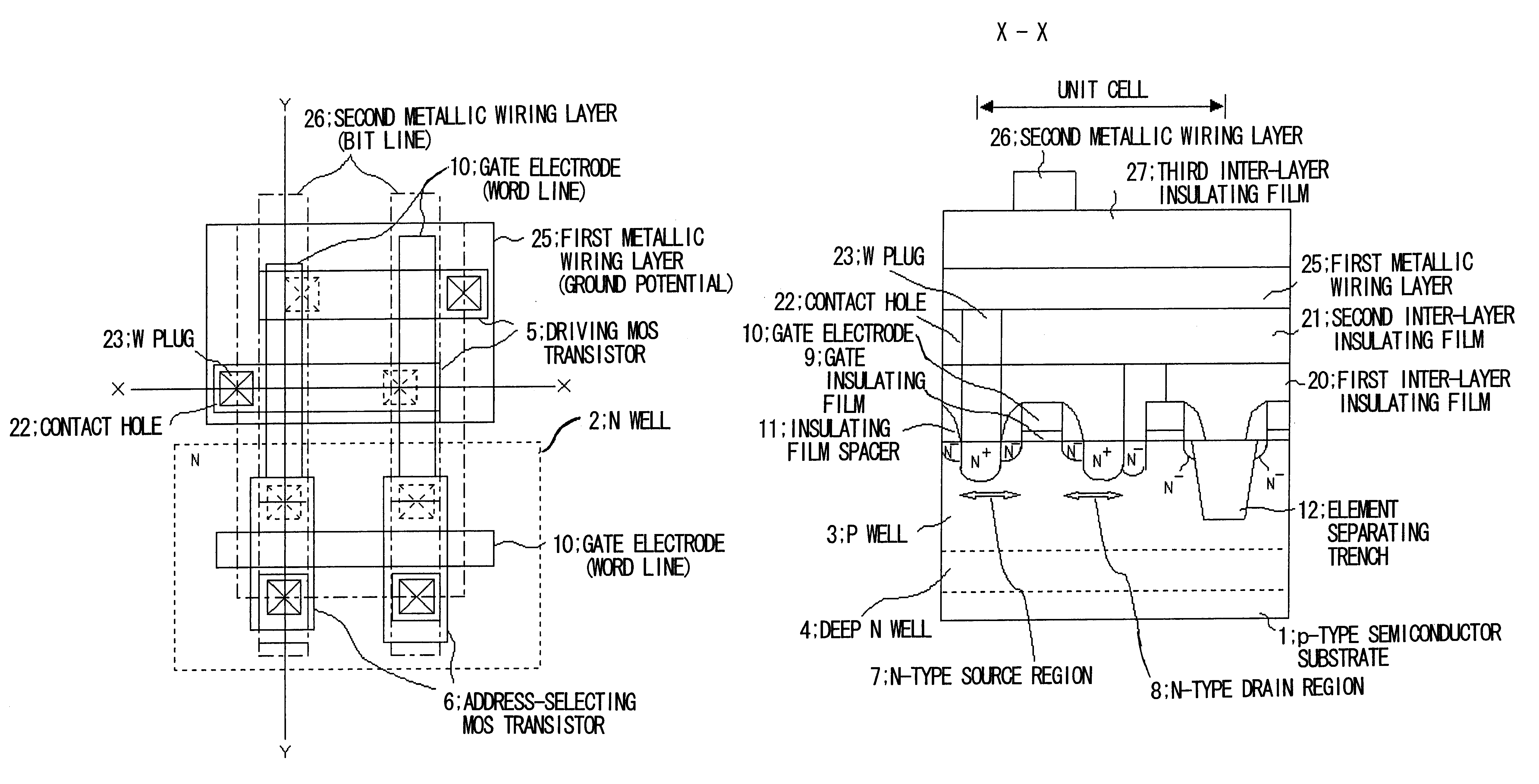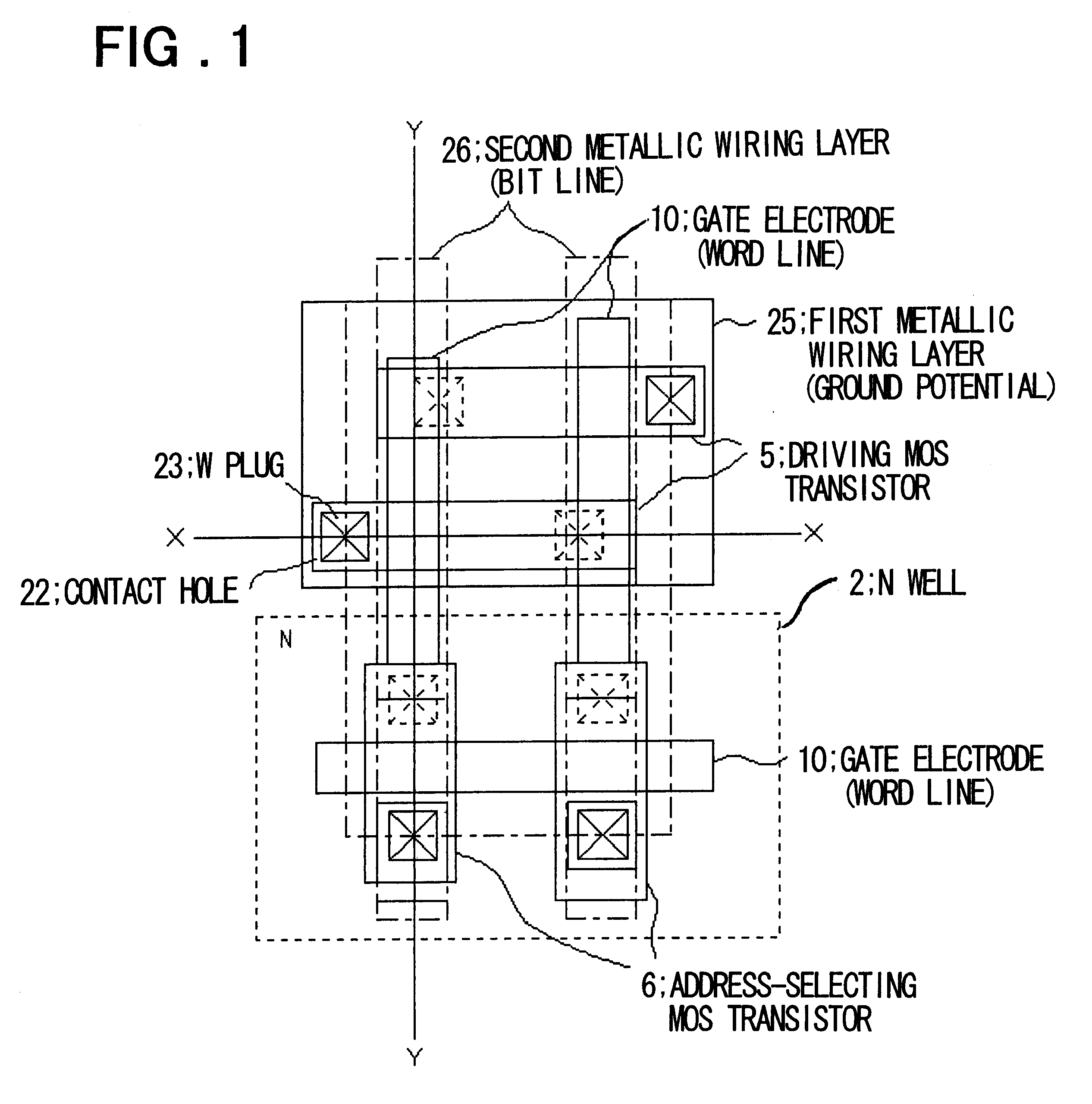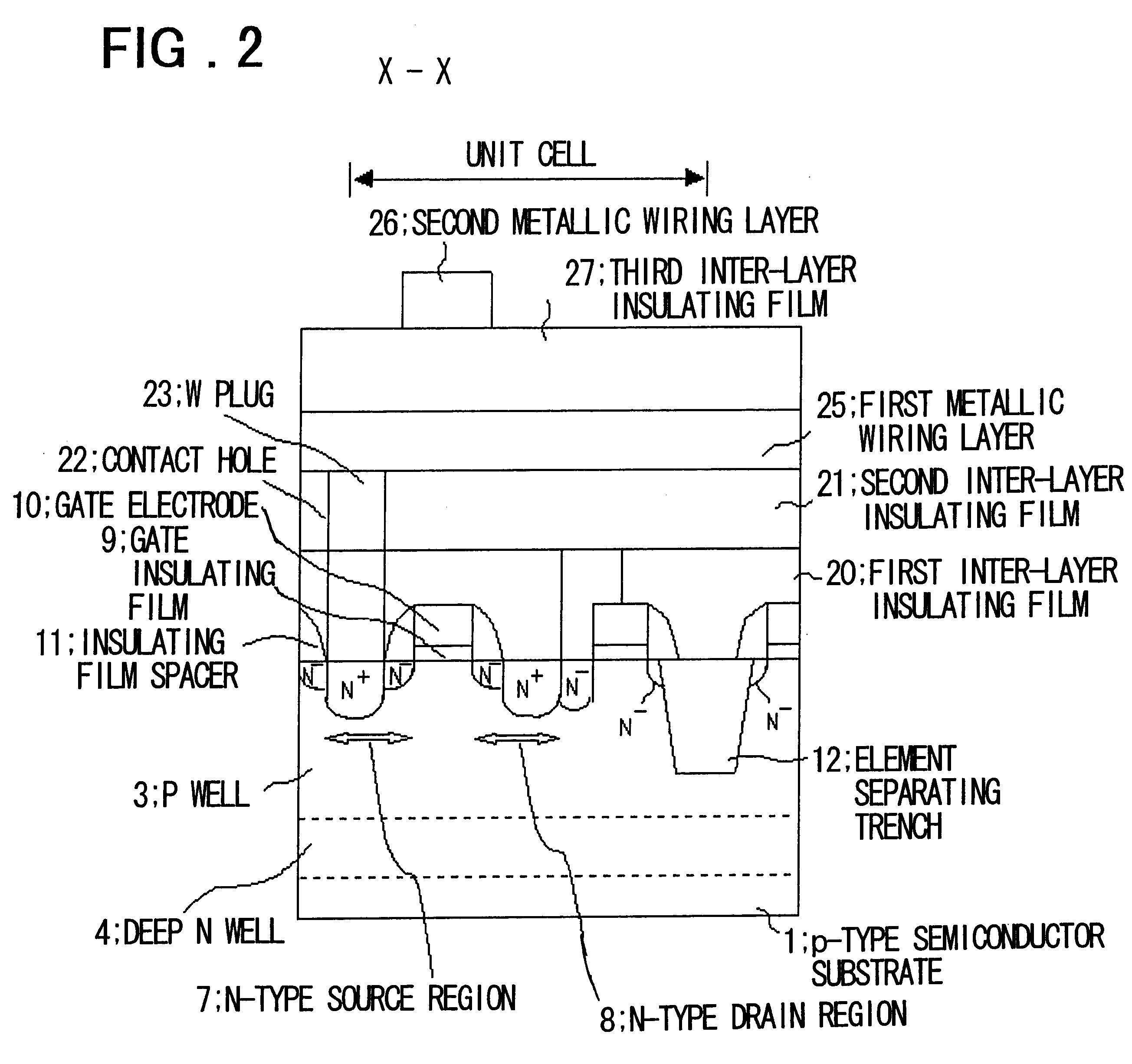Loadless static random access memory device and method of manufacturing same
a random access memory and static random access technology, applied in the direction of semiconductor devices, electrical devices, transistors, etc., to achieve the effect of preventing soft errors
- Summary
- Abstract
- Description
- Claims
- Application Information
AI Technical Summary
Benefits of technology
Problems solved by technology
Method used
Image
Examples
first embodiment
A semiconductor memory device according to first embodiment of the present invention will be described with reference to FIGS. 1 to 8. FIG. 1 is a plan view illustrating the construction of a loadless 4-transistor SRAM according to the first embodiment, FIG. 2 a sectional view taken along line X--X of FIG. 1 and FIG. 3 a sectional view taken along line Y--Y of FIG. 1. FIGS. 4 to 6 are process sectional views in which a method of manufacturing the semiconductor memory device is illustrated in the order of the steps. Furthermore, FIGS. 4(a) to 6(g) illustrate a series of manufacturing steps, which are shown as individual diagrams for convenience sake. FIG. 7 is a diagram useful in describing the steps of FIGS. 4(c) to 5(d), which deal particularly with an SRAM cell area. FIG. 8 is a diagram useful in describing a loadless SRAM formed by the method of this embodiment.
The construction of the semiconductor memory device according to this embodiment will be described first. As depicted in...
second embodiment
A semiconductor memory device according to a second embodiment of the present invention will be described with reference to FIGS. 9 to 11. FIG. 9 is a process sectional view schematically illustrating part of a method of manufacturing the semiconductor memory device according to this embodiment. FIG. 10 is a sectional view schematically illustrating the structure of the semiconductor memory device according to this embodiment, and FIG. 11 is a sectional view in a case where the method of forming the deep n well of this embodiment is applied to a DRAM. It should be noted that this embodiment differs from the first embodiment in that the deep n well of this embodiment is formed so as to cover only that part of the memory cell underlying the p well. Other steps of the manufacturing process and other components are the same as those of the first embodiment.
With regard to the process for forming the deep n well characterizing this embodiment, steps up to the formation of the p well and n...
third embodiment
A semiconductor memory device according to a third embodiment of the present invention will be described with reference to FIG. 12, which is a process sectional view schematically illustrating part of a method of manufacturing a semiconductor memory device according to the third embodiment. This embodiment differs from the second embodiment in that the shape of the resist pattern in this embodiment is the usual rectangular shape, the characterizing feature being that the injection (implantation) angle of ions in the step for forming the deep n well is set to an angle less than 90.degree. . Other steps of the manufacturing process and other components are the same as those of the second embodiment.
With regard to the process for forming the deep n well characterizing this embodiment, which will be described with reference to FIG. 12, steps up to the well formation of FIG. 4(b) are carried out through a method similar to that of the first embodiment described above, after which the res...
PUM
 Login to View More
Login to View More Abstract
Description
Claims
Application Information
 Login to View More
Login to View More - R&D
- Intellectual Property
- Life Sciences
- Materials
- Tech Scout
- Unparalleled Data Quality
- Higher Quality Content
- 60% Fewer Hallucinations
Browse by: Latest US Patents, China's latest patents, Technical Efficacy Thesaurus, Application Domain, Technology Topic, Popular Technical Reports.
© 2025 PatSnap. All rights reserved.Legal|Privacy policy|Modern Slavery Act Transparency Statement|Sitemap|About US| Contact US: help@patsnap.com



